
How to Use 1channel 5V 30A relay: Examples, Pinouts, and Specs
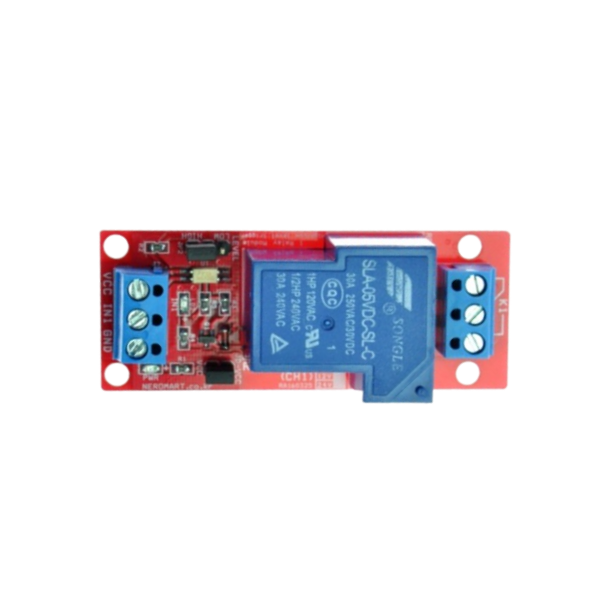
 Design with 1channel 5V 30A relay in Cirkit Designer
Design with 1channel 5V 30A relay in Cirkit DesignerIntroduction
The NEROMART NER-13709 is a single-channel relay module designed to control high-power devices using low-power control signals. Operating at 5V, this relay can handle loads of up to 30A, making it ideal for switching high-current devices such as motors, heaters, lights, and other appliances. Its compact design and high current capacity make it a versatile component for home automation, industrial control systems, and DIY electronics projects.
Explore Projects Built with 1channel 5V 30A relay
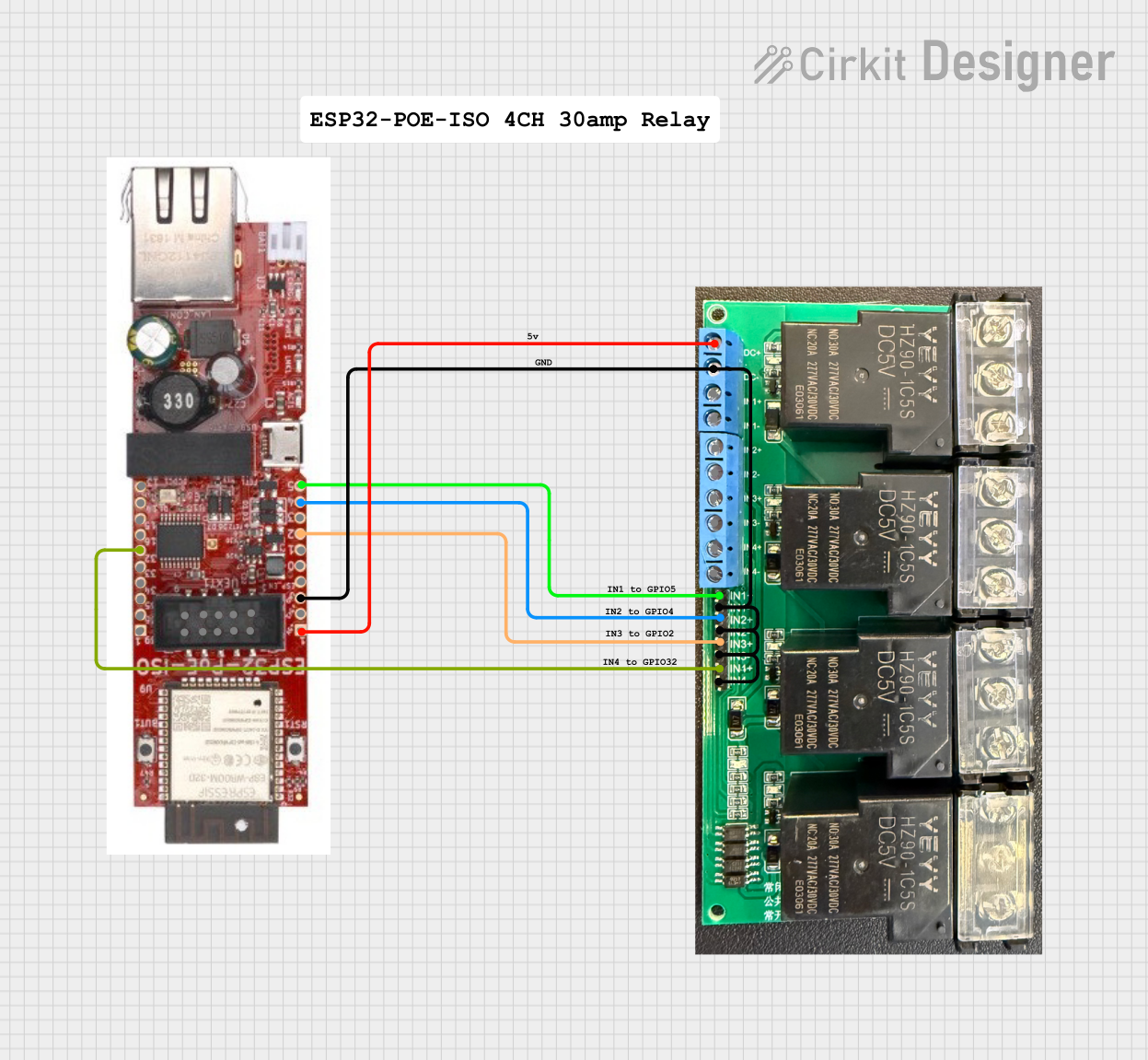
 Open Project in Cirkit Designer
Open Project in Cirkit Designer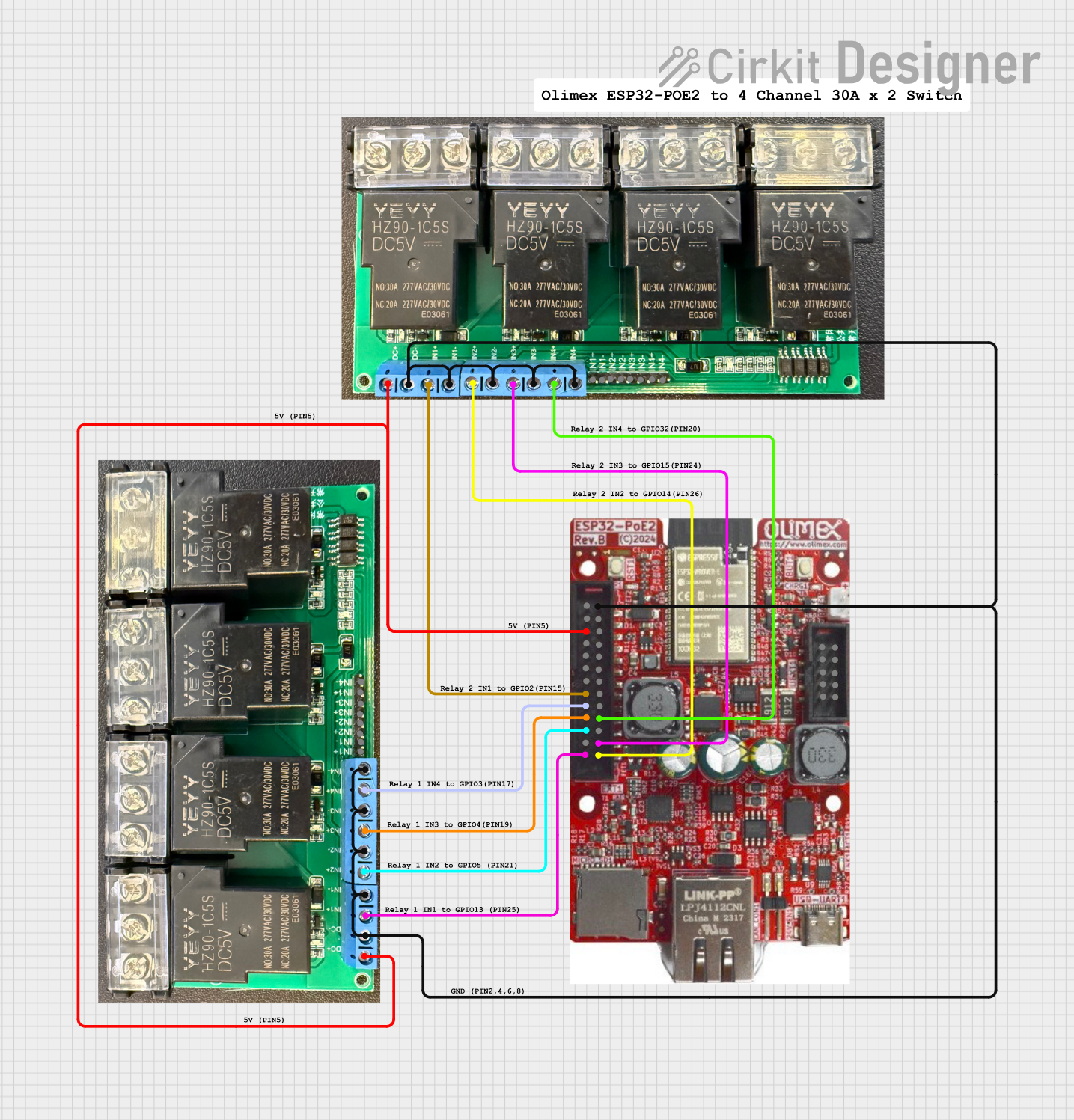
 Open Project in Cirkit Designer
Open Project in Cirkit Designer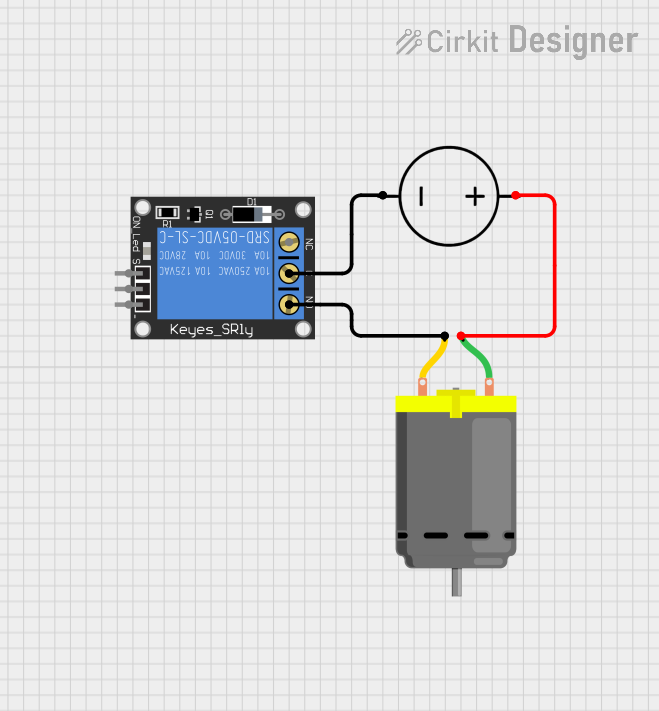
 Open Project in Cirkit Designer
Open Project in Cirkit Designer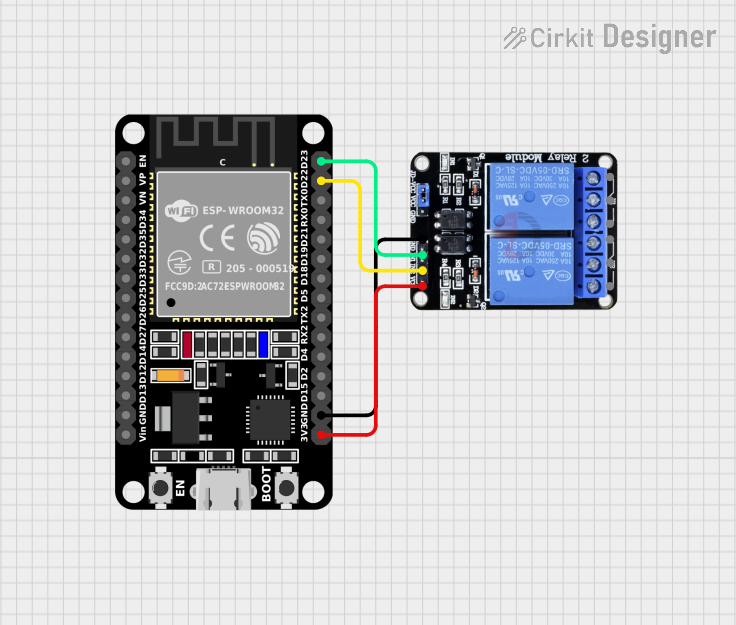
 Open Project in Cirkit Designer
Open Project in Cirkit DesignerExplore Projects Built with 1channel 5V 30A relay

 Open Project in Cirkit Designer
Open Project in Cirkit Designer
 Open Project in Cirkit Designer
Open Project in Cirkit Designer
 Open Project in Cirkit Designer
Open Project in Cirkit Designer
 Open Project in Cirkit Designer
Open Project in Cirkit DesignerCommon Applications
- Home automation (e.g., controlling lights, fans, or appliances)
- Industrial equipment control
- Motor and pump control
- DIY electronics and Arduino-based projects
- Smart home systems
Technical Specifications
Below are the key technical details of the NEROMART NER-13709 relay module:
| Parameter | Specification |
|---|---|
| Operating Voltage | 5V DC |
| Maximum Load Current | 30A |
| Maximum Load Voltage | 250V AC / 30V DC |
| Control Signal Voltage | 3.3V to 5V DC |
| Relay Type | SPDT (Single Pole Double Throw) |
| Dimensions | 50mm x 26mm x 18mm |
| Isolation | Optocoupler isolation for safety |
| Trigger Type | Active Low |
| Operating Temperature | -40°C to 85°C |
Pin Configuration
The relay module has 6 pins and terminals, as described in the table below:
| Pin/Terminal | Description |
|---|---|
| VCC | Connect to the 5V power supply. |
| GND | Connect to the ground of the power supply. |
| IN | Control signal input (active low). Connect to a microcontroller or control pin. |
| COM | Common terminal for the relay switch. |
| NO | Normally Open terminal. Connect the load here if it should be off by default. |
| NC | Normally Closed terminal. Connect the load here if it should be on by default. |
Usage Instructions
How to Use the Relay in a Circuit
- Power the Relay Module: Connect the VCC pin to a 5V DC power supply and the GND pin to the ground.
- Control Signal: Connect the IN pin to a microcontroller (e.g., Arduino) or a control circuit. The relay is triggered when the IN pin receives a LOW signal.
- Load Connection:
- Connect the load's live wire to the COM terminal.
- Use the NO terminal if the load should be off by default and turn on when the relay is triggered.
- Use the NC terminal if the load should be on by default and turn off when the relay is triggered.
- Isolation: Ensure proper electrical isolation between the control circuit and the high-power load to prevent damage or hazards.
Important Considerations
- Power Supply: Ensure the relay module is powered with a stable 5V DC supply.
- Load Ratings: Do not exceed the maximum load current (30A) or voltage (250V AC / 30V DC).
- Heat Dissipation: For high-current loads, ensure proper ventilation or heat dissipation to prevent overheating.
- Safety: Always disconnect power before wiring the relay to avoid electric shock.
Example: Using the Relay with an Arduino UNO
Below is an example of how to control the relay using an Arduino UNO:
// Example: Controlling a 1-Channel 5V 30A Relay with Arduino UNO
// Manufacturer: NEROMART
// Part ID: NER-13709
const int relayPin = 7; // Pin connected to the relay module's IN pin
void setup() {
pinMode(relayPin, OUTPUT); // Set the relay pin as an output
digitalWrite(relayPin, HIGH); // Ensure the relay is off initially
}
void loop() {
digitalWrite(relayPin, LOW); // Turn the relay ON (active low)
delay(5000); // Keep the relay on for 5 seconds
digitalWrite(relayPin, HIGH); // Turn the relay OFF
delay(5000); // Keep the relay off for 5 seconds
}
Notes:
- The relay is active low, meaning it turns on when the control signal is LOW.
- Use an external power supply if the relay draws more current than the Arduino can provide.
Troubleshooting and FAQs
Common Issues and Solutions
Relay Not Switching
- Cause: Insufficient control signal voltage or current.
- Solution: Ensure the IN pin receives a proper LOW signal (below 0.8V) to activate the relay.
Load Not Turning On/Off
- Cause: Incorrect wiring of the load to the relay terminals.
- Solution: Double-check the connections to the COM, NO, and NC terminals.
Overheating
- Cause: Exceeding the relay's maximum current rating.
- Solution: Ensure the load does not exceed 30A. Use a heat sink or cooling fan if necessary.
Arduino Resets When Relay Activates
- Cause: Voltage spikes or insufficient power supply.
- Solution: Add a flyback diode across the relay coil and use a decoupling capacitor near the Arduino's power pins.
FAQs
Can I use this relay with a 3.3V microcontroller?
- Yes, the relay can be triggered with a 3.3V control signal, but ensure the VCC pin is powered with 5V.
Is the relay safe for inductive loads like motors?
- Yes, but you should use a flyback diode or snubber circuit to protect the relay from voltage spikes.
Can I control multiple relays with one Arduino?
- Yes, as long as each relay is connected to a separate digital pin and the Arduino can supply sufficient current.
What happens if I connect both NO and NC terminals?
- This is not recommended. Use either NO or NC depending on your application, but not both simultaneously.
By following this documentation, you can effectively use the NEROMART NER-13709 relay module in your projects.